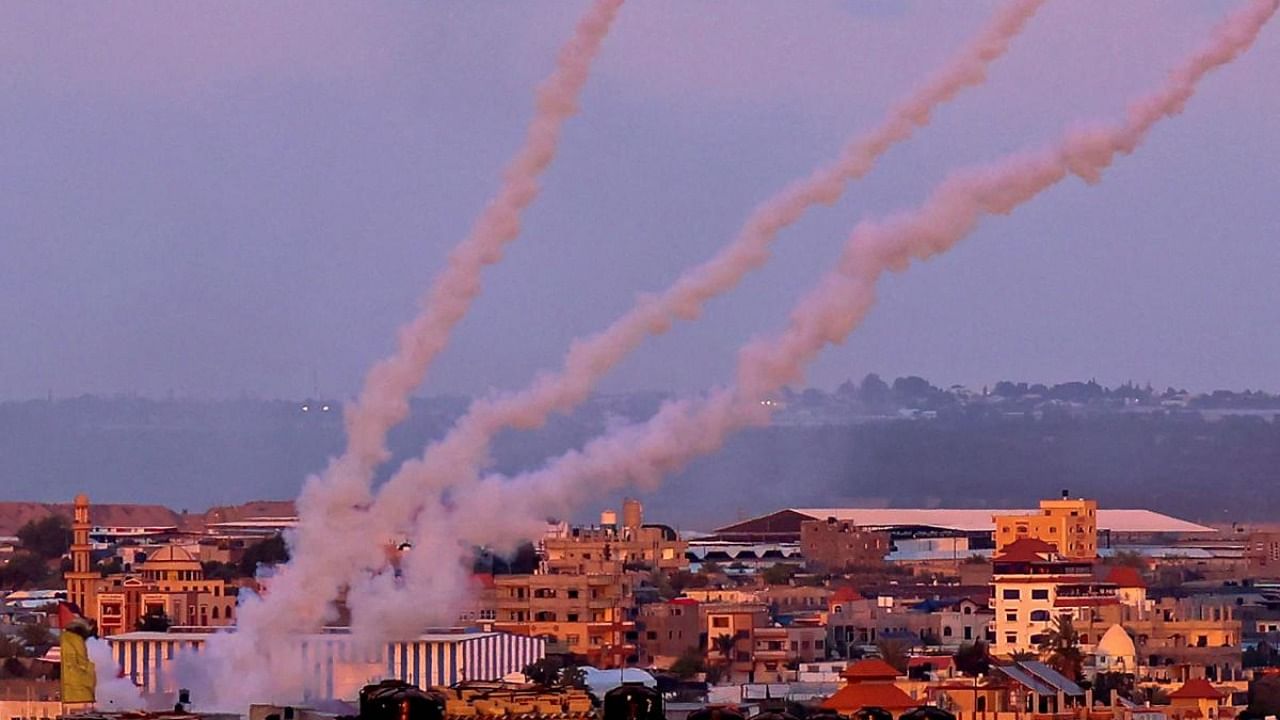
The Israeli-Palestinian conflict has proved once again that it is one of the most intractable conflicts of the world. Worryingly, it is a tinderbox that can flare up anytime and assume vertical escalation within a short period of time, leaving very little time for the international community to arrest the crisis. As the current crisis worsens, a host of diplomats from regional countries have rushed to Tel Aviv to stave off a full-blown war. While Egypt and Qatar have sent their representatives to Tel Aviv to broker a truce, the US has sent a senior American diplomat to the Middle East to meet with Israeli and Palestinian leaders “to urge de-escalation and to bring calm”. US President Joe Biden has pressed for immediate de-escalation in the aftermath of the bombing of several buildings, including one that housed the offices of prominent media companies Aljazeera and Associated Press.
In the absence of a ceasefire, the two sides remain engaged in violence, with intermittent peaks of escalation. For the first time since 2014, Jerusalem has come under attack by Hamas. Israel has responded by targeted aerial bombardment in Gaza, taking out some of Hamas’ key leaders. Additionally, some of the most sophisticated technologies like the Ballistic Missile Defence system Iron Dome and drones have been used in the ongoing fight by Israel against perhaps the world’s most capable guerrilla fighters in Hamas. What has made matters worse during the ongoing conflict is the spread of sectarian violence and tension to mixed-religion cities like Lod, Sderot, Bat Yam, and central parts of West Bank like Bethlehem and Ramallah.
As Israel continues attacks on Gaza with a possible ground invasion plan on the table and its troops lined up along the Israel-Gaza border, continued escalation risks bloodbath on the streets of Gaza, with the possibility of sucking other regional and extra-regional actors into this conflict. Despite Israel’s asymmetric military and technological edge over an enemy like Hamas, the option of overrunning Gaza is mired in various apprehensions and repercussions: the expected loss of international credibility for Israel; a war of regional proportions with the Hezbollah being drawn in, facilitating more support from Iran; and lastly, Hamas’ guerrilla warfare capabilities inside Gaza, a terrain that they know too well. It is estimated that Hamas has about 25,000-30,000 armed militants. The relative lull since 2014 has given Hamas enough time to not just increase missile firing silos but to train better and fortify its positions and plan for Israel’s possible ground invasion. After all, Israel had shown such intentions in 2014, too.
Already, Iran's Supreme Leader Ayatollah Ali Khamenei and Iraq’s top Shia cleric Grand Ayatollah Ali al-Sistani have urged Hamas to continue its fight against Israel, lending overt moral support. Hamas factions inside Lebanon have fired three rockets into Israel and have tried to enter Israel through the border, perhaps a signal of Hezbollah’s solidarity with Hamas. Qatar has witnessed rallies by Hamas leaders. Rockets launched from Syria in the direction of Israel on May 15 and violence near Israel’s border with Jordan further show the extent of current solidarity against Israel among Islamic fundamentalist factions in countries around it.
These circumstances leave a lot to do for the international community, particularly the UN, Egypt, Qatar and the US, to diffuse the tension and restore normalcy. However, the role of these countries in immediately bringing down the escalation appears limited this time, as religious sentiments have been stirred and the Netanyahu government looks to consolidate his political position amidst the rise of alternative coalitions and the domestic political deadlock over the last two years.
On the other side, Hamas’ political future in Gaza and its talks with Fatah in this regard are at a critical stage, with elections in the pipeline, and it may receive a boost by the way it fights against Israel. The unrest that has spread inside Israeli cities has the potential of reviving Fatah’s importance, too, as the group was going through an internal crisis after its recognition of Israel as legitimate after the 1993 Oslo Accords. The current breakdown of peace also jeopardises the Abraham Accords of last year.
The US, a primary broker of truce in the past, is tiptoeing under Biden and doesn’t want to be drawn in just when it is trying to get out of the region from Afghanistan. Even though it blocked the publication of an UN-backed statement on the issue, the US had to give in to a UNSC meeting on it, led by China. As the United Nations Security Council met on May 16, Israeli Prime Minister Benjamin Netanyahu declared that the campaign against Gaza will continue as long as Isreal feels it is necessary and its campaign against Hamas “will take time.” This leaves the conflict at a precipitous low, with the potential to draw in other countries and actors in the region.
(The writer is Research Fellow, Indian Council of World Affairs, New Delhi)